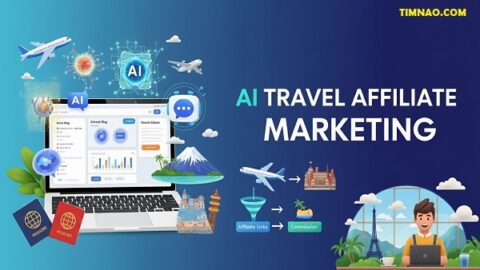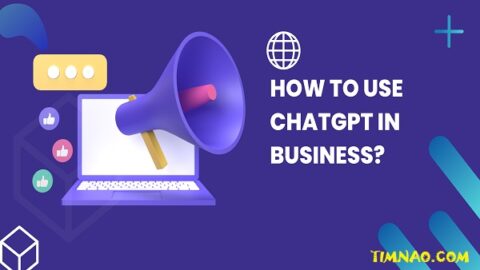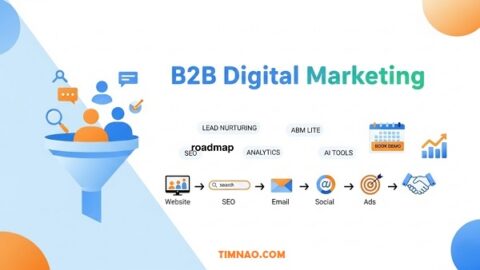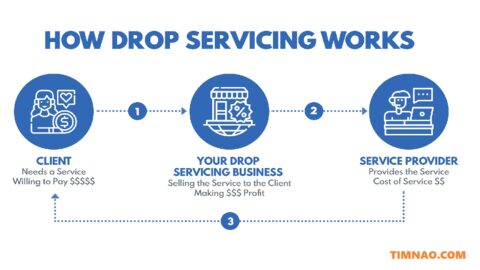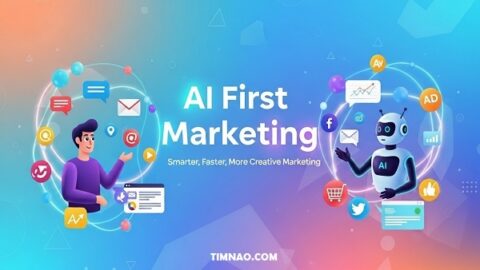The Ultimate Guide to Personalized Marketing: A Powerful Strategy to Delight Your Customers 🚀
In today’s crowded digital world, generic, one-size-fits-all messages just don’t cut it anymore. That’s where personalized marketing comes in. This powerful approach is about more than just using a customer’s first name in an email; it’s about creating genuinely tailored experiences that make your audience feel seen, understood, and valued. By leveraging what you know about your customers, you can craft messages, offers, and interactions that resonate on a deeper level.
This shift from mass messaging to individual conversations is the single most important change in modern business. Companies that master personalized marketing are not just surviving; they are thriving by building stronger relationships and boosting customer engagement. For beginners, this might sound complex, but the core idea is simple: treat each customer like an individual. This guide will break down everything you need to know to get started, transforming how you connect with your audience and driving incredible results for your business.
Table of Contents
- 🤔 Why Personalized Marketing is a Non-Negotiable Game-Changer
- 🧠 The Psychology of Personalization: Why It Feels So Good
- 📊 The Fuel for Your Engine: Understanding Data-Driven Marketing
- 🚀 Putting Personalization into Action: Core Strategies for Beginners
- 💻 Mastering Website & E-commerce Personalization
- 💌 Unlocking the Power of Personalized Email Campaigns
- 📱 Connecting on Social Media with a Personal Touch
- 🎯 Supercharging Your Ads with Personalization and Retargeting
- 🤖 The Magic of AI in Modern Personalized Marketing
- ⚖️ The Golden Rule: Balancing Personalization with Privacy
- 📈 Are Your Efforts Working? How to Measure Success
- 🗺️ Your 5-Step Roadmap to Launching a Personalization Strategy
- ✨ Final Thoughts: Your Journey to Marketing Excellence
🤔 Why Personalized Marketing is a Non-Negotiable Game-Changer
Let’s start with the “why.” Why should you invest your time and energy into personalized marketing? The simple answer is that your customers not only appreciate it—they now expect it. The days of shouting the same message at everyone are over, and the data proves it.
Recent studies show that the vast majority of consumers, often cited as over 70%, feel frustrated when their shopping experience is impersonal. More importantly, a significant percentage are more likely to buy from a brand that offers tailored experiences. When a customer feels like you understand their individual needs, it creates a powerful sense of connection and loyalty that generic marketing simply can’t replicate.
This isn’t just about making customers feel good; it has a direct and measurable impact on your bottom line. Businesses that excel at personalization report significant lifts in revenue and see a much higher return on their marketing investments. By delivering the right message to the right person at the right time, you reduce wasted ad spend and dramatically increase the efficiency of your campaigns.
Furthermore, a great personalized experience is one of an organization’s most effective tools for boosting customer engagement. When content, product recommendations, and offers are relevant, customers are more likely to interact with your brand, spend more time on your site, and ultimately become repeat buyers. In a competitive market, this level of engagement is what separates leading brands from the rest of the pack.
In a digital world overflowing with content, standing out requires more than catchy slogans. Personalized marketing is about delivering the right message to the right person at the right time—based on who they are, what they like, and how they behave.
Unlike the old days of mass advertising, today’s personalization is powered by data, automation, and real-time insights. Think product recommendations on Amazon, curated Netflix playlists, or emails that speak directly to your shopping habits. These aren’t just clever tricks—they’re the new standard.
Personalization leads to:
-
Higher conversion rates
-
Better customer retention
-
Improved brand loyalty
-
A more memorable and relevant experience
It’s not a “nice-to-have” anymore—it’s a must-have for brands who want to survive and thrive.
🧠 The Psychology of Personalization: Why It Feels So Good
Have you ever wondered why personalized marketing is so effective? The secret lies in human psychology. This strategy taps into our fundamental desire to be recognized and feel important. It transforms a simple transaction into a meaningful interaction.
Think about walking into your favorite local coffee shop where the barista knows your name and your usual order. That small act of recognition makes you feel valued and understood. Personalization in the digital world aims to replicate that exact feeling, making customers feel like more than just another number in a database.
This strategy also works by reducing what psychologists call “decision fatigue.” We are bombarded with thousands of choices and advertisements every day, which can be overwhelming. When a brand presents us with a curated selection of products we might genuinely like, it simplifies the decision-making process. It cuts through the noise and provides a clear, easy path, making the entire experience more enjoyable.
Finally, personalization builds an emotional connection that fosters brand loyalty. When a company remembers a customer’s birthday with a special offer or recommends a product based on their past purchases, it creates a sense of a reciprocal relationship. This data-driven marketing approach shows you’re paying attention, which makes customers far more likely to stick with your brand for the long haul.
📊 The Fuel for Your Engine: Understanding Data-Driven Marketing
At the heart of all effective personalized marketing is data. You can’t personalize an experience without first understanding who your customer is and what they care about. This is where data-driven marketing becomes essential. It’s the practice of using information—collected ethically—to inform and guide your marketing decisions.
Personalization without data is just guessing. The more you know about your customers, the more effectively you can personalize their experience.
3 Types of Customer Data:
-
First-Party Data: Collected directly from your own platforms (website analytics, CRM, email engagement).
-
Second-Party Data: Data shared by trusted partners (e.g., co-branded campaigns).
-
Third-Party Data: Purchased or aggregated from outside sources (becoming less reliable due to privacy laws).
For beginners, the world of data can seem intimidating, but it’s simpler than you think. There are a few key types of data you’ll use. The most valuable is first-party data, which is information you collect directly from your audience. This includes things like website behavior, purchase history, and information people share when they sign up for your newsletter. It’s the gold standard because it’s accurate, reliable, and you own it.
Another powerful type is zero-party data. This is information that customers intentionally and proactively share with you. Think of interactive quizzes, surveys, or preference centers where customers tell you exactly what they like. This is a fantastic way to gather insights while empowering your customers and building trust.
What You Can Do With Customer Data:
-
Recommend relevant products
-
Send personalized emails
-
Deliver dynamic website content
-
Automate retargeting ads
-
Improve support through chatbot personalization
As you get more advanced, you might explore other data types, but the key is to start with what you have. Your own data is a treasure trove of insights waiting to be unlocked. By analyzing this information, you can begin to see patterns, understand preferences, and build a solid foundation for all your personalization efforts.
Don’t Forget Privacy
With regulations like GDPR and CCPA, ethical data practices are essential. Always be transparent, ask for consent, and allow users to manage their data preferences.
🚀 Putting Personalization into Action: Core Strategies for Beginners
Now that you understand the “why” and the “what,” let’s dive into the “how.” Implementing personalized marketing doesn’t have to be an overwhelming task. You can start with a few high-impact strategies across the channels where you already connect with your audience.
The goal is to create a seamless experience wherever a customer interacts with your brand. This is often called an omnichannel approach. It means that whether a customer is on your website, reading an email, or scrolling through social media, the personalized experience feels consistent and connected.
As a beginner, focus on one or two areas first, master them, and then expand. The most common and effective starting points are your website or e-commerce store, your email marketing campaigns, and your social media channels. Each of these offers unique opportunities to increase customer engagement through personalization.
In the following sections, we’ll break down actionable strategies for each of these core areas. We’ll provide simple, practical advice that you can start implementing today to make your marketing more relevant, engaging, and effective.
💻 Mastering Website & E-commerce Personalization
Your website is often the first and most important point of contact for your customers. It’s your digital storefront, and personalizing this space can dramatically improve the user experience and boost conversions. The goal is to make every visitor feel like the site was designed just for them.
A fantastic starting point is personalizing your product recommendations. Using data on a visitor’s Browse history and past purchases, you can showcase items they are most likely to be interested in. E-commerce giants like Amazon have perfected this, but with modern tools, it’s an accessible strategy for businesses of all sizes. Simple recommendation widgets like “Customers Also Bought” or “Trending Products You Might Like” can significantly increase average order value.
Another powerful technique is using dynamic content. This means the content on your website changes based on who is viewing it. For example, you could show a different homepage banner to a first-time visitor versus a returning customer. You can also tailor content based on a visitor’s location, showing them local store information or pricing in their currency.
Don’t forget to personalize the checkout process. This is a critical stage where many potential sales are lost. You can reduce cart abandonment by pre-filling shipping and billing information for returning customers or offering personalized discounts on items left in their cart. A smooth, frictionless, and personalized checkout is the final, crucial step in securing a sale.
💌 Unlocking the Power of Personalized Email Campaigns
Email marketing remains one of the most effective channels for data-driven marketing, boasting an incredible return on investment. However, its power is only fully realized through personalization. Generic email blasts are often ignored, but a personalized email feels like a one-on-one conversation.
The easiest way to start is with personalized subject lines. Simply including the recipient’s name can boost open rates significantly. But true personalization goes much deeper. Use your customer data to segment your email list into smaller, more targeted groups. For example, you can create segments based on purchase history, Browse behavior, or even their level of engagement with previous emails.
Once you have your segments, you can send highly relevant content. Send special offers to your most loyal customers, re-engagement campaigns to those who haven’t purchased in a while, and abandoned cart reminders to shoppers who left items behind. These behavior-based emails are incredibly effective because they are timely and directly related to a customer’s recent actions.
You can also use dynamic content within your emails. This allows you to show different product recommendations or offers to different subscribers within the same email campaign. With tools like Mailchimp or Klaviyo, automating these sophisticated personalized marketing strategies is easier than ever, allowing you to deliver the right message to every subscriber.
📱 Connecting on Social Media with a Personal Touch
Social media platforms are bustling hubs of conversation, making them a prime location for personalized marketing. With billions of active users, these channels offer a unique opportunity to engage with your audience in a more interactive and personal way. Personalization here is about tailoring your content and ads to match the interests and behaviors of different user segments.
A great way to do this is through targeted advertising. Platforms like Facebook and Instagram have powerful tools that allow you to show different ads to different groups based on their demographics, interests, and past interactions with your brand. Instead of a generic ad, a user might see an ad for a product they recently viewed on your website, creating a highly relevant and effective touchpoint.
User-generated content (UGC) is another fantastic tool for personalization. Encourage your customers to share photos or reviews of your products and then feature that content in your feed or ads. This not only provides authentic social proof but also makes your featured customers feel recognized and valued, which is a powerful form of customer engagement.
Finally, consider using AI-powered chatbots on platforms like Facebook Messenger. These bots can provide instant, personalized product recommendations or answer customer questions based on their profile and interaction history. This creates a helpful, one-on-one experience that can guide users toward a purchase and build a stronger connection with your brand.
🎯 Supercharging Your Ads with Personalization and Retargeting
Personalized advertising is all about moving away from the “spray and pray” approach and instead delivering highly relevant ads to the people most likely to be interested. This not only improves customer engagement but also makes your ad spend far more efficient. A key strategy in this area is retargeting.
Retargeting, sometimes called remarketing, involves showing ads to people who have already visited your website or interacted with your brand. Since these individuals have already shown interest, they are a “warm” audience and are much more likely to convert. For example, if someone views a pair of shoes on your site but doesn’t buy them, you can show them an ad for those exact shoes as they browse other websites or social media.
You can make your retargeting efforts even more powerful with dynamic ads. These AI-driven ads automatically change their content based on the user’s behavior. If a visitor looked at several different products, a dynamic ad can showcase those specific items, creating a personalized and compelling reminder.
It’s important to be strategic with retargeting to avoid overwhelming your audience. Set frequency caps so people don’t see your ads too often, and consider offering a small discount or free shipping in your retargeting ads to provide that extra nudge they need to complete their purchase. When done right, this form of personalized marketing can be a major driver of sales.
🤖 The Magic of AI in Modern Personalized Marketing
The engine driving the most advanced personalized marketing today is Artificial Intelligence (AI) and machine learning. While this might sound like something out of a science fiction movie, AI is now an accessible and essential tool for marketers. It’s what allows businesses to analyze vast amounts of data and deliver hyper-personalized experiences at scale.
AI algorithms can analyze customer behavior in real-time to predict what they might do next. This is known as predictive analytics. For instance, an AI can identify a customer who is at risk of “churning” (leaving your brand) and automatically trigger a special offer to encourage them to stay. This proactive approach to customer engagement is incredibly powerful.
Machine learning models also power the recommendation engines used by giants like Netflix and Spotify. These systems continuously learn from user interactions to get smarter and more accurate over time. Every time you watch a show or listen to a song, the algorithm refines its understanding of your preferences, ensuring its future recommendations are even better.
For beginners, many marketing platforms like HubSpot now have built-in AI features that make this technology easy to use. These tools can help optimize email send times, generate personalized content, and identify your most valuable customer segments automatically. Leveraging AI is no longer a luxury for large corporations; it’s a key to creating a truly dynamic and effective data-driven marketing strategy.
AI is making it easier than ever to deliver personalization at scale—even for small businesses.
How AI Powers Personalization:
-
Predictive Analytics: Forecast what a user might do next.
-
Dynamic Recommendations: Suggest products based on browsing behavior.
-
Chatbots & Virtual Assistants: Provide personalized support 24/7.
-
Email Automation: Send messages triggered by user behavior (abandoned carts, birthdays, etc.)
Real-World Examples:
-
Netflix recommends shows based on your viewing history.
-
Spotify creates personalized playlists like “Discover Weekly.”
-
Grammarly sends personalized writing insights.
⚖️ The Golden Rule: Balancing Personalization with Privacy
While personalized marketing is incredibly powerful, it comes with a great responsibility: protecting customer privacy. In today’s world, consumers are more aware and concerned than ever about how their data is being used. Building and maintaining trust is paramount, and any personalization strategy must be built on a foundation of ethical data practices.
The most important principle is transparency. Be open and honest with your customers about what data you are collecting and how you are using it to improve their experience. Provide a clear and easy-to-understand privacy policy, and always give users control over their own information. Features like preference centers, where customers can choose the types of communications they receive, are a great way to empower them.
With regulations like GDPR and the move away from third-party cookies, the focus is shifting heavily toward first-party and zero-party data. This is a positive change, as it encourages marketers to build more direct and transparent relationships with their customers. Instead of tracking users across the web, you’re gathering information they willingly provide to you.
Ultimately, personalization should never feel “creepy” or intrusive. The goal is to be helpful, not invasive. By putting privacy first and using data responsibly, you can build a personalized marketing strategy that not only drives results but also fosters deep, lasting trust with your audience.
📈 Are Your Efforts Working? How to Measure Success
Implementing a personalized marketing strategy is a great first step, but how do you know if it’s actually working? Measuring your results is crucial for understanding what resonates with your audience and for continuously improving your approach. Tracking key performance indicators (KPIs) will give you the data-driven insights you need to optimize your campaigns.
One of the most important metrics is the conversion rate. This measures the percentage of users who take a desired action, such as making a1 purchase or signing up for a newsletter. You can compare the conversion rate of a personalized campaign to a generic one to see the direct impact of your efforts.
Other key metrics to monitor include click-through rate (CTR) on your emails and ads, the average order value (AOV), and the customer retention rate. A successful personalization strategy should lead to improvements across all of these areas. Tools like Google Analytics are essential for tracking this data on your website.
A/B testing is another critical practice. This involves creating two versions of a marketing asset—for example, two different email subject lines—and testing them against each other to see which one performs better. By continuously testing and refining your headlines, offers, and recommendations, you can optimize your personalized marketing strategy for maximum impact.
🗺️ Your 5-Step Roadmap to Launching a Personalization Strategy
Feeling inspired and ready to get started? Crafting your own personalized marketing strategy is an exciting journey. Here is a simple, five-step roadmap to guide you as you begin.
- Define Your Goals: First, decide what you want to achieve. Are you looking to increase sales, boost customer engagement, or improve loyalty? Having clear, measurable goals will guide your entire strategy.
- Gather Your Data (Ethically): Start by looking at the first-party data you already have from your website and CRM. Create opportunities to collect zero-party data through simple quizzes or surveys to better understand your audience’s preferences.
- Segment Your Audience: Group your audience into meaningful segments based on their behavior or demographics. Start simple, with groups like “new visitors,” “repeat customers,” and “abandoned carts.”
- Pick a Channel and Start Small: You don’t have to do everything at once. Choose one channel, like email marketing, and launch a simple personalization campaign. For example, create an automated abandoned cart email with a personalized subject line.
- Measure, Learn, and Expand: Track the performance of your first campaign. Use the insights you gain to refine your approach and then gradually expand your data-driven marketing efforts to other channels like your website and social media.
Personalization is only getting smarter and more immersive.
Emerging Trends:
-
Hyper-Personalization: Real-time adjustments based on moment-by-moment behavior.
-
Voice & Conversational AI: Think Alexa, Google Assistant, and Siri delivering personalized experiences.
-
Augmented Reality (AR): “Try before you buy” virtual fitting rooms and makeup apps.
-
Zero-Party Data: Data that customers willingly provide through quizzes, preference centers, or gamified surveys.
Tools to Explore:
-
HubSpot – CRM and email personalization
-
Optimizely – A/B testing and personalization
-
ActiveCampaign – Email & automation
-
ManyChat – Messenger marketing automation
✨ Final Thoughts: Your Journey to Marketing Excellence
The future of marketing is undeniably personal. By moving away from generic messages and embracing tailored experiences, you can forge stronger, more meaningful relationships with your customers. Personalized marketing is not just a passing trend; it’s a fundamental shift in how successful brands connect with their audience.
This journey is all about leveraging data to enhance customer engagement, building trust through ethical practices, and continuously learning and adapting. The tools and strategies are more accessible than ever, putting the power of personalization within reach for businesses of all sizes.
By taking the first step today, you are on the road to creating marketing that people not only respond to but genuinely love. Your customers are ready for a more personal conversation—it’s time to start talking.
Reference video:



